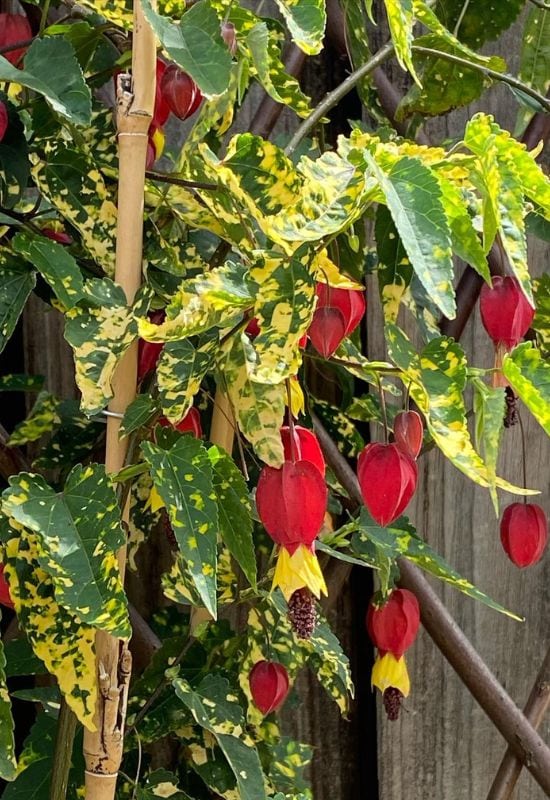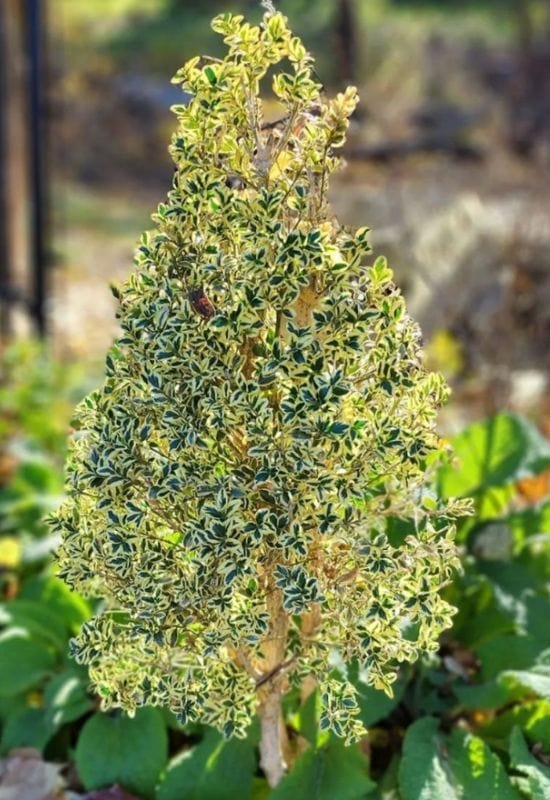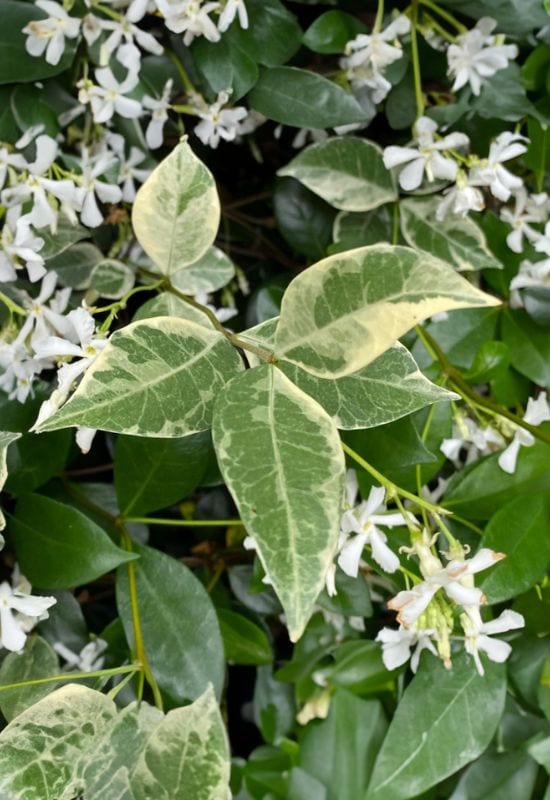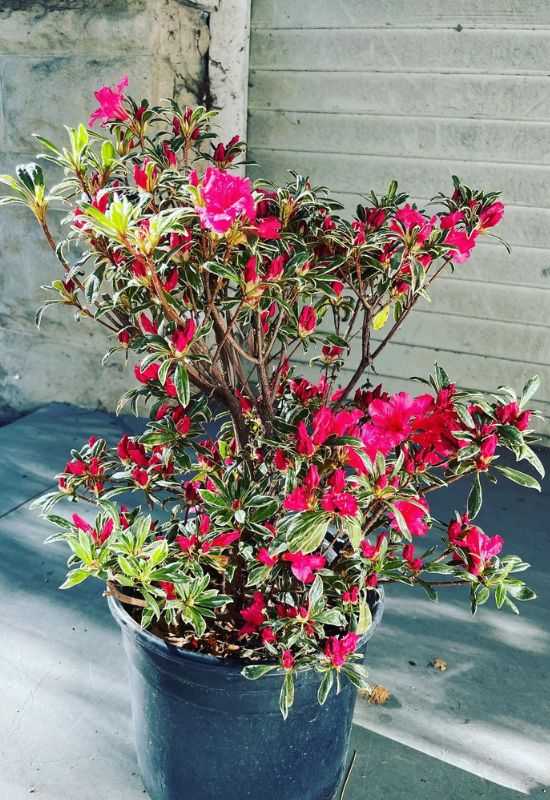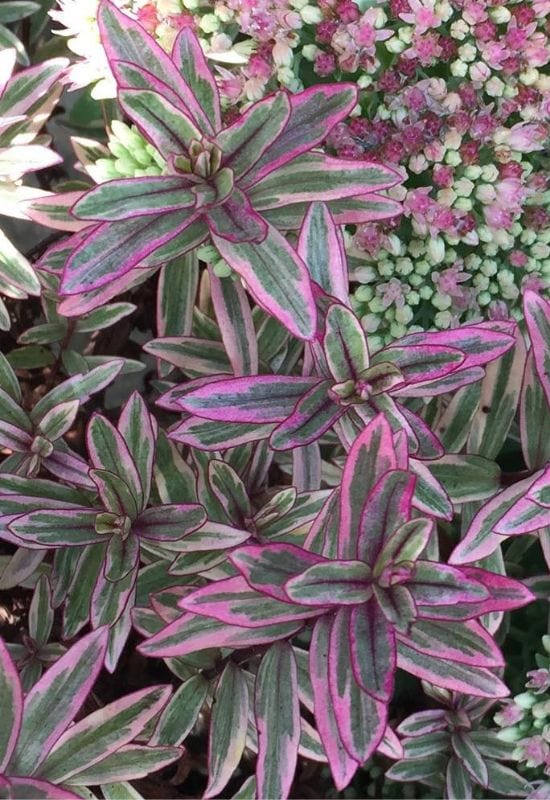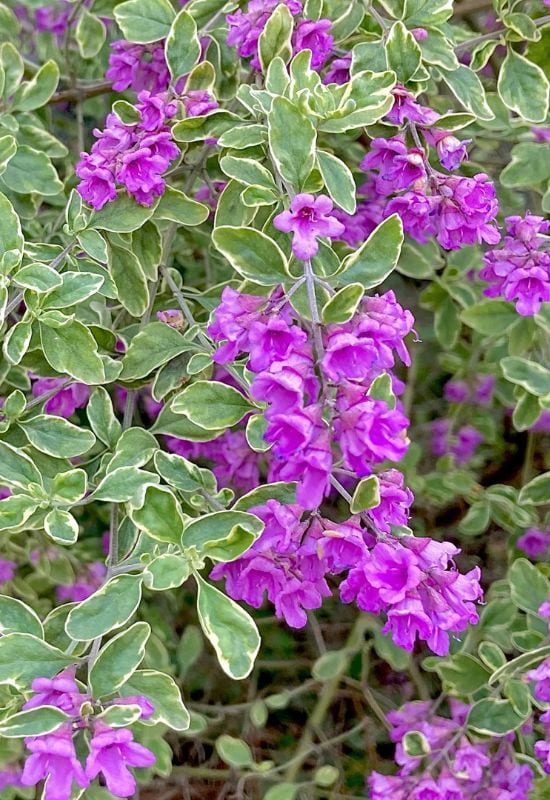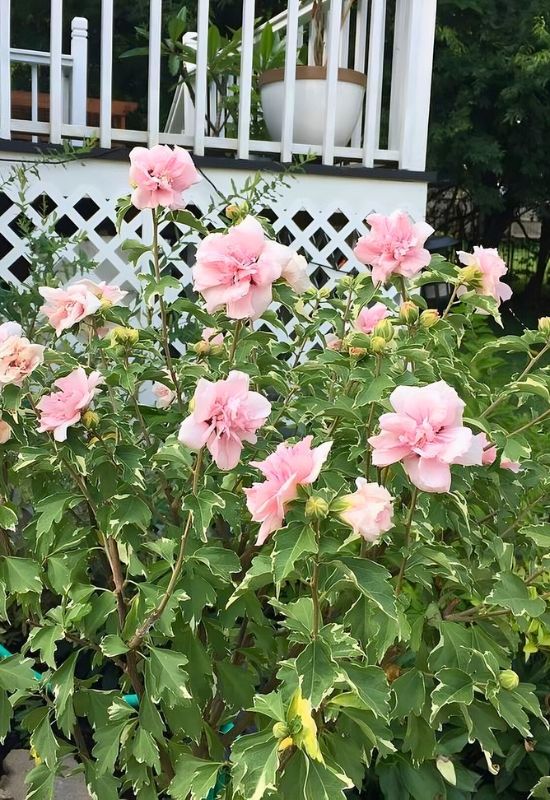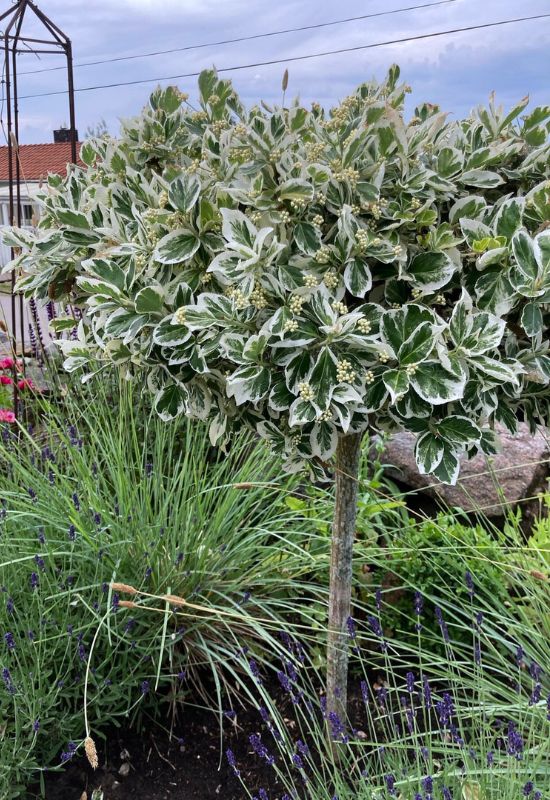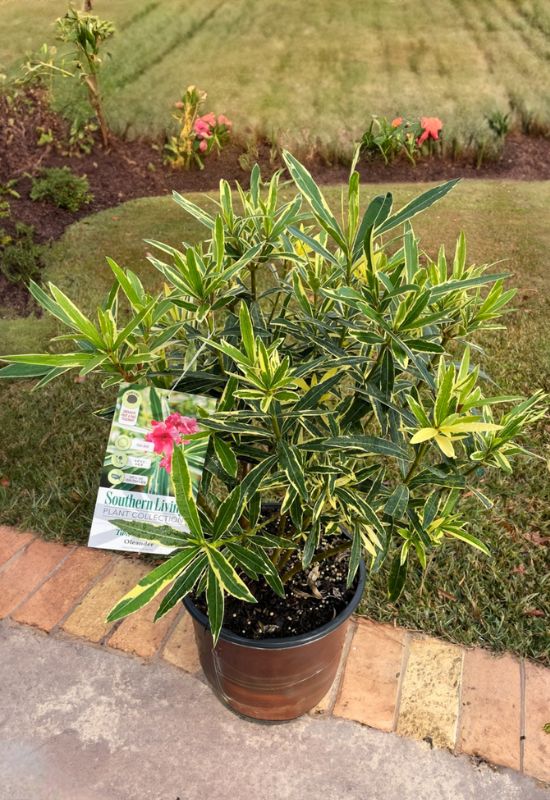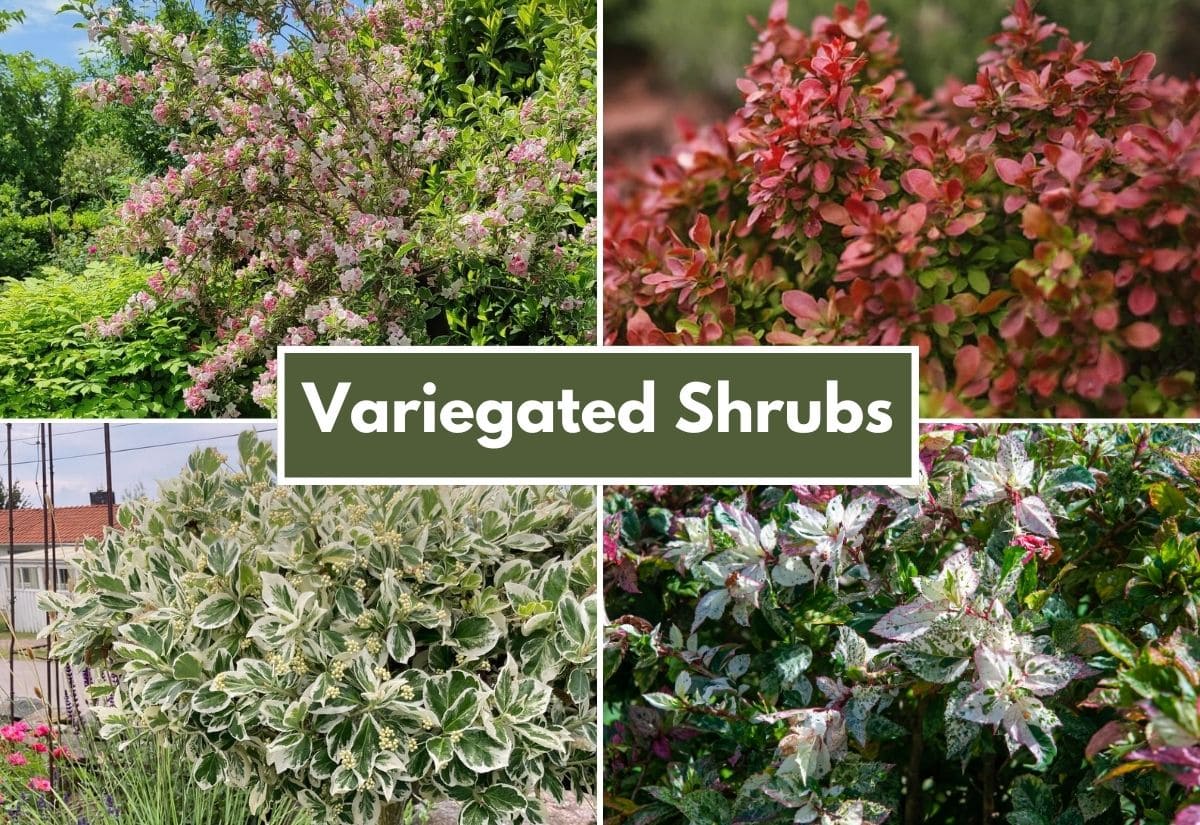
Shrubs are the jelling element of gardens, they fill in spaces with foliage, structure hedges and give landscaping a sense of unity and continuity – and also colors! An all green garden can be quite dull, but playing with different leaf shades and tonalities, and using variegation can lift even the most conventional of yards.
Most will blossom as well, adding even more vibrancy and variation to your garden and its personality, and variegation in shrubs also gives you a fine texture, intriguing detail, and a sense of the vast palette that Mother Nature has given us gardeners to paint and shape our green spaces!
Evergreen or deciduous, there are lots of shrubs with variegated leaves you can grow in your garden and integrate into your landscape – let’s meet the very best then!
The 20 Shrubs with the Most Beautiful Variegated Leaves of All!
And here they are, 20 evergreen and deciduous shrubs with the most amazing variegation you can ever include in your landscaping!
Remember that most of these variegated shrubs also have amazing blooms, as the first on our list will demonstrate…
1: ‘Variegatum’ Trailing Abutilon (Abutilon megapotanicum ‘Variegatum’)
The ‘Variegatum’ variety of trailing abutilon is a real wonder of Nature! Its dense and lush foliage is a tapestry of elongated heart shaped leaves with gently serrated edges, where you can see a striking contrast between the dark and deep forest green they display and mustard to golden yellow spots scattered on them.
It is a semi evergreen shrub which can give structure and texture to your garden into the winter months if you live in a warm country. But it is really at its best from early summer to the first day of frost.
Yes, because this is as long as its exquisite blossoms last! Under the canopy of leaves on arching branches, you will see nodding buds of deep carmine red that look like Chinese paper lanterns, dangling in the wind.
And when they open, they will still keep this amazing shape, and reveal a crown of yellow petals flare at the bottom. Each flower is about 2 inches across (5.0 cm) and a beauty to behold. No wonder it has received the famous Award of Garden Merit by the Royal Horticultural Society!
Suitable for most informal garden styles, including oriental, traditional or even exotic, you can grow it in hedges or even borders; it is also great in containers and to drape walls, thanks to its trailing habit.
2: Variegated European Boxwood (Buxus sempervirens ‘Variagata’)
From an unusual shrub to a classic of gardening history: evergreen box is a staple in many gardens, especially Italian and formal ones, and the ‘Variegata’ variety has the extra factor!
Its dense branches guarantee a thick and impenetrable mound that you can easily cut into any shape you like – and, in fact, it is a favorite for topiary…
The evergreen foliage is composed of very glossy and strong oval leaves, tightly packed together, and with a deep hunter green center surrounded by cream white to cream yellow edges.
Strong and easy to grow, it is also one of the most pruning friendly bushes in the whole world. While we all love it for its structural qualities, and we cut it regularly, it is also a flowering plant, though the yellowish blooms are inconspicuous, but followed by brown capsules.
Super easy to grow and mold or train, ‘Variegata’ European boxwood will suit any garden style in hedges, borders and containers. It is also very useful in foundation planting and wall sides.
3: ‘Plantation Pink Variegated’ Camellia (Camellia sasanqua ‘Plantation Variegated Pink’)
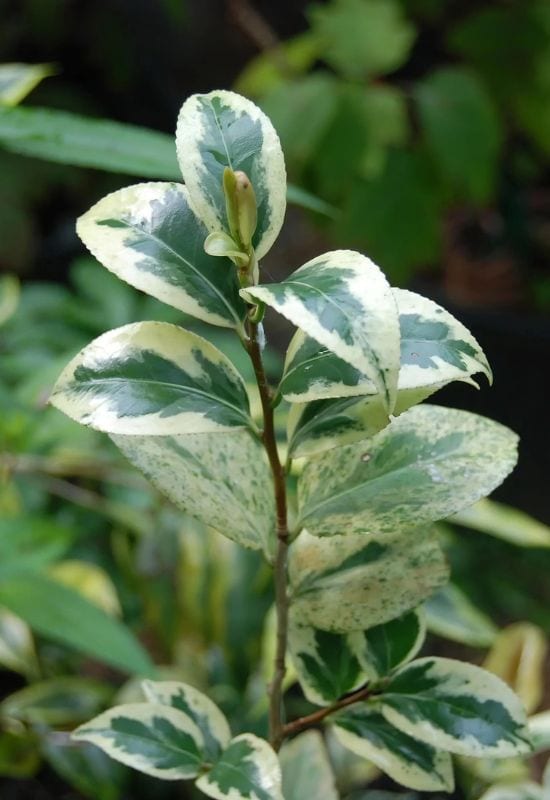
From a tough and easy to grow, well known shrub, to a rare collector’s item: ‘Plantation Pink Variegated’ camellia. If you love camellias, and you want a variegated cultivar, there is actually one for you!
In fact, its evergreen leaves have a very unusual shade of sea green, virtually unique for these shrubs, but it fades to light tonalities in small areas as it forms a central irregular patch surrounded by cream white edges.
Where these two colors meet, you will also see dots of dark magenta, as if someone had scattered some raspberry juice drops on it.
Of course, it is also a flowering plant, and this is an autumn blooming camellia. The blossoms are round, but not big, about 2 to 3 inches across (5.0 to 7.5 cm).
They are single and here is another quirky trait of this bush: they are quite papery in texture and crinkled, displaying the most vibrant rose pink color! They are also fragrant, and they will last a long time, into the winter months!
It is hard to find ‘Plantation Pink Variegated’ camellia though, being a rare cultivar, but if you are in love with these shrubs and you want colorful leaves as well as blooms, it will certainly add to your tall hedge or you could have it for foundation planting or as a specimen.
4: ‘Kaleidoscope’ Glossy Abelia (Abelia x grandiflora ‘Kaleidoscope’)
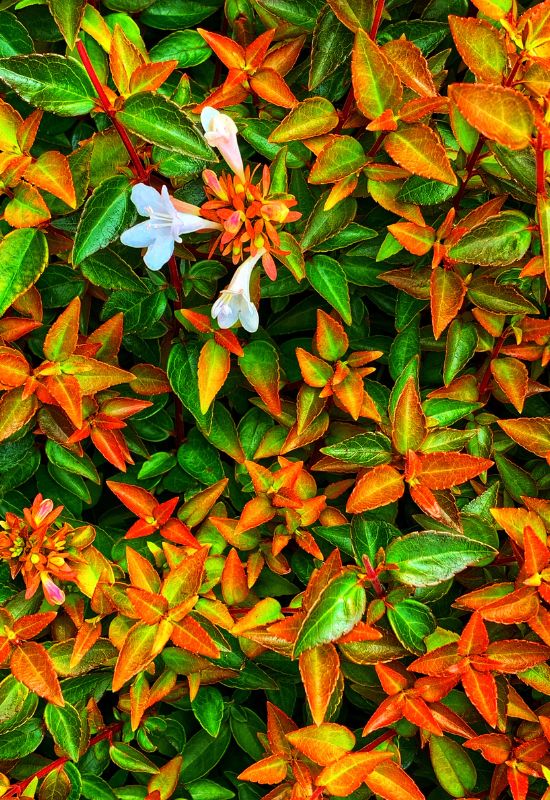
‘Kaleidoscope’ glossy abelia is really true to its name! In fact, this small semi evergreen shrub makes up for its size in personality and palette…
The fact is also that it keeps changing all through the year, offering you and your garden new surprises as time goes on… In fact, the pointed and – of course – shiny leaves emerge as yellow to lime green at first.
But then, they take on warmer and warmer shades of gold, then orange and finally red by fall. The center, which keeps a greenish patch, will darken progressively till it becomes a dark eggplant purple with grayish undertones as the season closes.
However, all through this time there will be a constant for your landscape… The white and trumpet shaped blooms that open at the tips of the branches will start in late spring and continue well into the autumnal months!
You can easily see why ‘Kaleidoscope’ glossy abelia will be a perfect specimen shrub in your garden, but it can also add lots of color to your hedges and borders, or be a lovely foundation plant!
5: ‘Light-O-Day’ Bigleaf Hydrangea (Hydrangea macrophylla ‘Light-O-Day’)
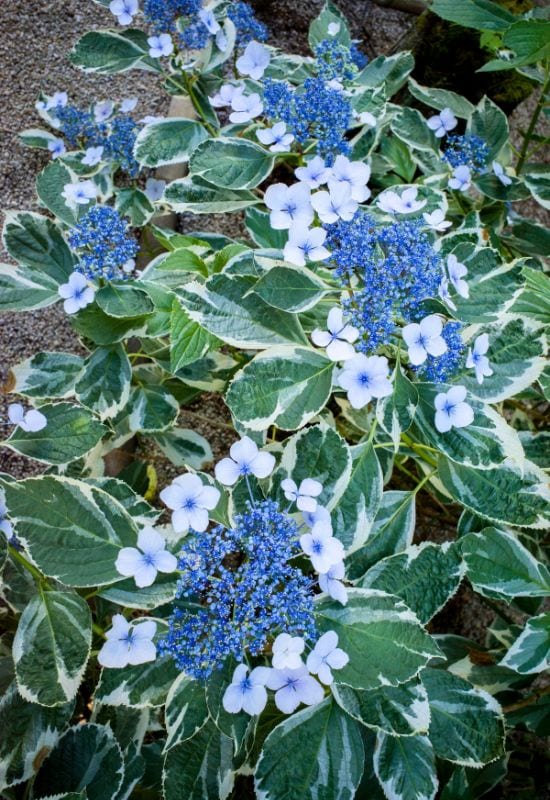
You may be surprised to know that there are even some variegated hydrangea varieties, and ‘Light-O-Day’ bigleaf hydrangea is one of them!
The lush and herbaceous looking foliage of this shrub has a fern green center, but the margins are white, and this candid rim at the edges can sometimes creep further into the leaf.
But this cultivar is a real champion of colors… And the blossoms demonstrate it quite well… Starting in early summer and continuing till the end of this season, they appear on flat clusters with small sessile flowers in the middle, and large sterile ones all around them…
The fact is that the sessile blossoms can be blue, and quite decidedly so, or rose pink, in a vibrant tonality depending on the soil pH. If it is acidic, you will get blue, if it is alkaline, you will get pink. The sterile ones, instead, will be whitish but with light blushes of… Blue or rose, accordingly!
You can grow ‘Light-O-Day’ bigleaf hydrangea as an accent shrub to color your garden with its leaves and blossoms, but in hedges or as foundation planting, its value is no less important.
6: Variegated Star Jasmine (Trachelospermum jasminoides ‘Variegatum’)
How many dimensions can you add to your landscaping with variegated star jasmine?
To start with, of course, the colorful foliage…
This cultivar of the winner of the Award of Garden Merit by the Royal Horticultural Society Trachelospermum jasminoides, this climbing shrub has glossy oval leaves with a center that ranges from a bright Kelly to a grayish pine green, according to light conditions, while the margins are wonderfully cream varying from whitish to yellowish.
You will enjoy this all year round, being evergreen, but you will also be stunned by the masses of star (helix) shapes snow white flowers that literally cover it in spring, and they come back sporadically in every season!
So, we are at two great assets, but there is a third you will not miss… The flowers are so intoxicatingly fragrant that even your neighbors, and their neighbors too will be able to smell them!
Variegated star jasmine is one of the most impressive climbing shrubs you can ever grow, and with little effort.
It can become quite massive as well, and it is great on walls, to cover fences, pergolas and definitely to transform your home into a colorful and fragrant vertical garden as a foundation plant…
7: Variegated Song of India (Dracaena reflexa ‘Song of India’)
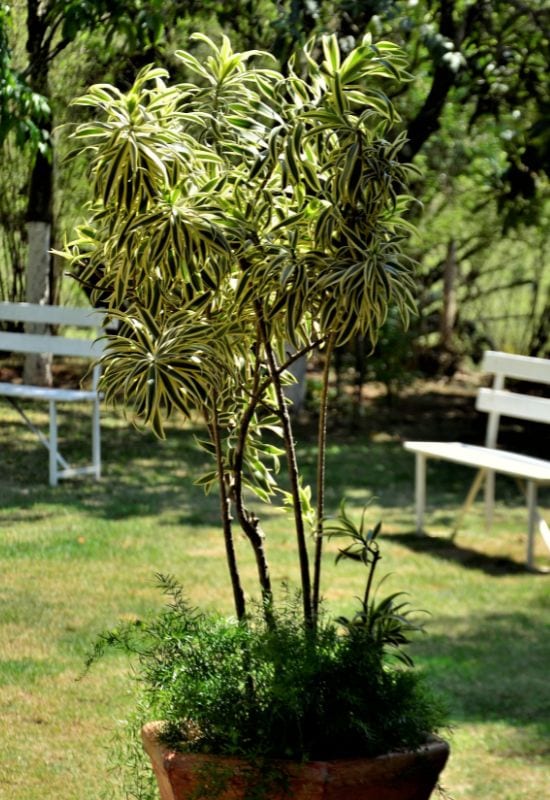
For a hot and exotic looking garden, variegated song of India is just perfect! This is a Dracaena variety from Madagascar, the Mauritius and other islands in the Indian Ocean, hence the name.
But it also tells us another thing: its long and pointed evergreen leaves, very glossy indeed curve beautifully towards the back, i.e., they are reflexed, forming a dense wall of bright to mid green and butter yellow, which you will fins around the edges.
Sometimes, you may even see some dark pine tonalities, depending on light conditions. What is more, this shrub can literally blossom all year round, with very impressive clusters of tubular, waxy wine red purplish flowers!
The contrast could not be more beautiful, and they are sometimes followed by bright orange red berries as well… However, it does beed excellent growing conditions to bloom and fruit.
A worthy winner of the Award of Garden Merit by the Royal Horticultural Society, variegated song of India is a stupendous and colorful shrub variety with a super exotic personality for a Mediterranean or Tropical looking garden.
8: Spotted Laurel (Aucuba japonica)
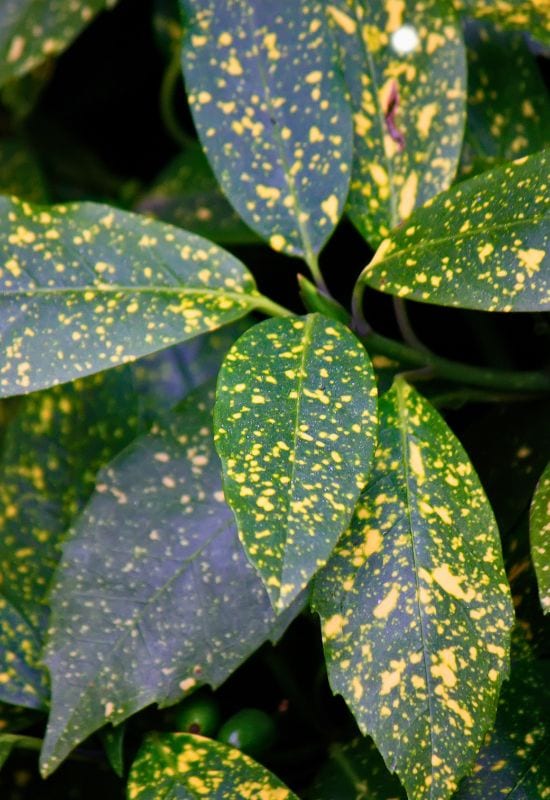
Spotted laurel is a decorative variegated shrub that will give your garden colors and interest all year round! Its evergreen, dense and glossy foliage will shine with its brilliant green shades and – as the name suggests – lots of champagne to sunflower yellow dots scattered all over them!
It will announce spring with flowers too… They are small and purple with cream white anthers and the come in clusters, along the leaf axis for female blooms, while male ones will display on terminal panicles.
But the story does not end here…
After the floral display is over, you will see berries appear in its stead, and they will soon take on a bright apple red elongated berries that look like dangling jewels, and they reflect the light all through the end of the season, then in winter, and they will only drop once the new year has come and your bushy fiend starts all over again!
A wonderful choice for most landscaping designs, spotted laurel is a low maintenance variegated shrub for hedges and at the back of borders, but it is equally attractive in containers and perfect for foundation planting.
9: ‘El Dorado’ California Lilac (Ceanothus thyrsiflorus ‘El Dorado’)
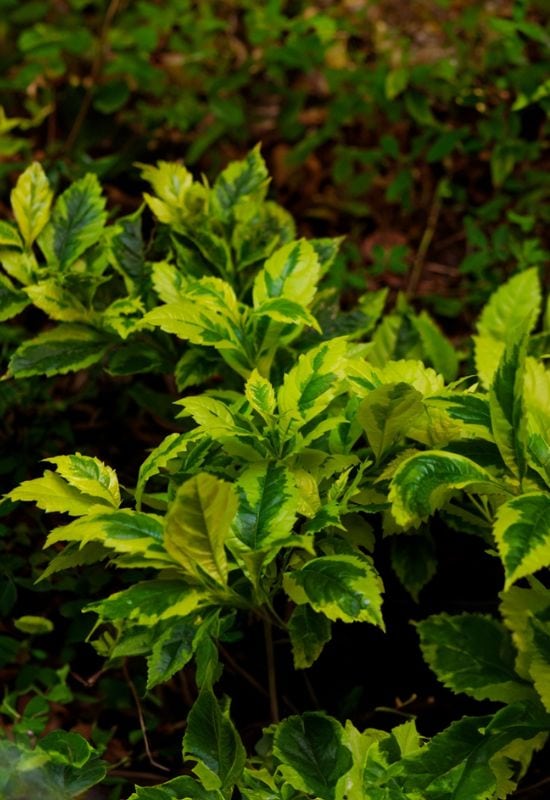
An extremely bright and luminous shrub you can use to give your garden a sparkling look all year round is ‘El Dorado’ California lilac.
This evergreen and variegated variety offers you very small but glossy leaves where you will see patches of dark and bright emerald green as well as an incredibly pale, almost silvery tonality of yellow around the edges.
The margins themselves have such a gentle crenation that they look like the work of a professional goldsmith! Intense sapphire blue flowers, small but tightly packed together, will also grace this bush from late spring to early summer, attracting lots of butterflies and pollinators.
If you prefer a bolder statement, its relative cultivar ‘Pershore Zanzibar’ has a golden color instead, which becomes predominant on mature foliage.
A well behaved variegated shrub full of light, ‘El Dorado’ California lilac will certainly work well as a centerpiece in your garden, but it can also work well as a backdrop to borders, in hedges and in wind screens as well.
10: Variegated Garden Sage (Salvia officinalis)
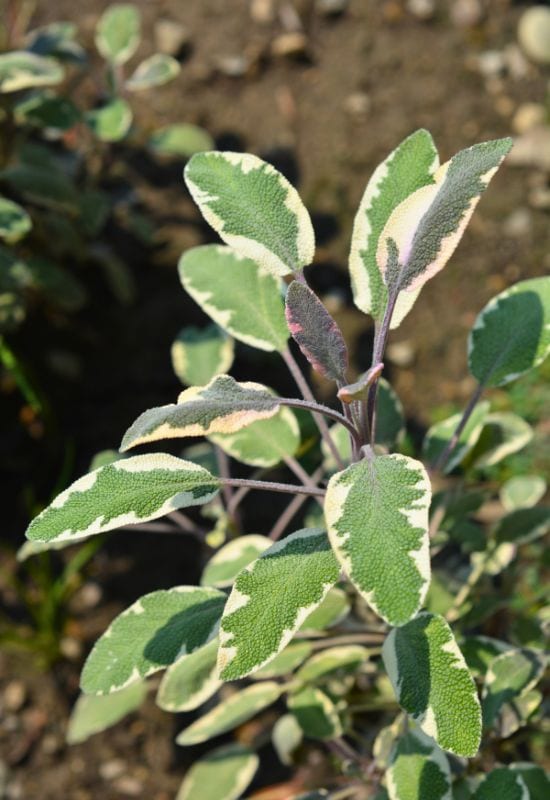
We need to add yet another sensory dimension to your colorful landscaped garden: taste! Yes, because garden (or kitchen) sage has a few variegated varieties as well! And we could not pick one, so we are showing you three…
If the silvery blue of the mother species is beautiful, with its hairy, dense and soft looking foliage, look at the leaves of the cultivar ‘Icterina’, with patches of cream and a feather of different shades of green in the middle!
Or you could pick the popular ‘Purpurescens’, which mixes violet purple and aquamarine like a professional artist, and quite freely.
But maybe two colors are not enough for you? Enter ‘Tricolor’, with purplish violet, hay green and cream!
All will decorate your garden all year round, being evergreens. And all will produce lovely spikes of lipped and lavender colored flowers in summer, attracting pollinators. And all are edible! So you can add bright notes to your dishes as well!
Easy to grow and fast spreading, garden sage is a must in Mediterranean gardens, but it is quite cold hardy indeed, so you can have it in most situations, from borders to containers, from wall sides to flower beds, even in temperate and even continental climates!
11: Variegated Azalea (Rhododendron japonica ‘Variegata’)
Azalea, or rhododendron, is one of the most exquisite flowering shrubs ever, and there is also a variegated cultivar, known as ‘Variegata’.
To the awesome blooms we expect, it adds very dense and healthy foliage in tonalities that range from hunter to vibrant cadmium green, semi glossy and with a lovely line of cream that highlights the edges of the ovate to elliptical leaves!
The good news is that this is an evergreen variety, so you will enjoy this decorative effect all year round!
Well, not really…
Yes, because when spring comes, it will literally cover in a sea of blossoms, which will transform it into a bush of color!
The actual shade varies, from pink to red, and the flowers are quite large, 2 to 3 inches across (5.0 to 7.5 cm). This way, you can enjoy not just their funnel shaped beauty, but also shiny texture of the wavy stars that the petals form at the mouth!
Variegated azalea will definitely suit any informal garden, even in an oriental style, as a specimen plant, in hedges and at the back of borders, or even close to your house, where it can be a really attractive foundation plant. Being a small variety, it can also brighten up terraces in containers.
12: ‘Massangeana’ Corn Plant (Dracaena fragrans ‘Massangeana’)
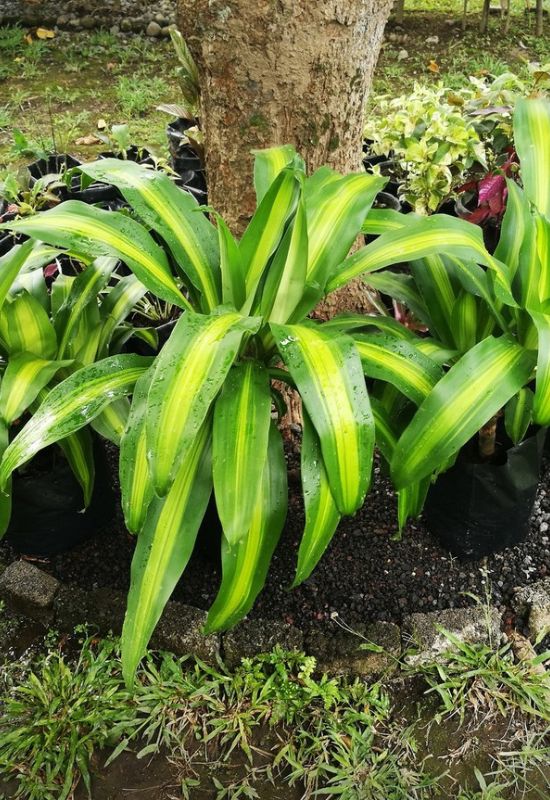
Imagine walking through a tropical forest… That’s the effect you can get if you integrate ‘Massangeana’ corn plant into your landscape, but with an added bonus: of course, it is a variegated shrub!
The super glossy, long and pointed but also broad leaves cone in decorative rosettes with stripes of very dark forest green and very bright shamrock green, giving you a striking contrast! All year round, of course, because it is evergreen as well.
Its upright habit will give you the impression of small palm trees, bringing the foliage high up to and above eye level. Blooms may occur at odd times, either in late fall to winter or in late spring to sumner…
But this adds to the pleasant surprise of seeing spherical umbels of star shaped blossoms in white with a pink blush, and long pistils growing from them. And, as the scientific name suggests, they are fragrant!
Winner of the Award of Garden Merit by the Royal Horticultural Society, ‘Massangeana’ corn plant is a popular houseplant you can grow outdoors in exotic or Mediterranean gardens in hot climates, as a specimen, for foundation planting, in containers, or in hedges.
13: ‘Argenteo-Marginata’ Tatarian Dogwood (Cornus alba ‘Argenteo-Marginata’)
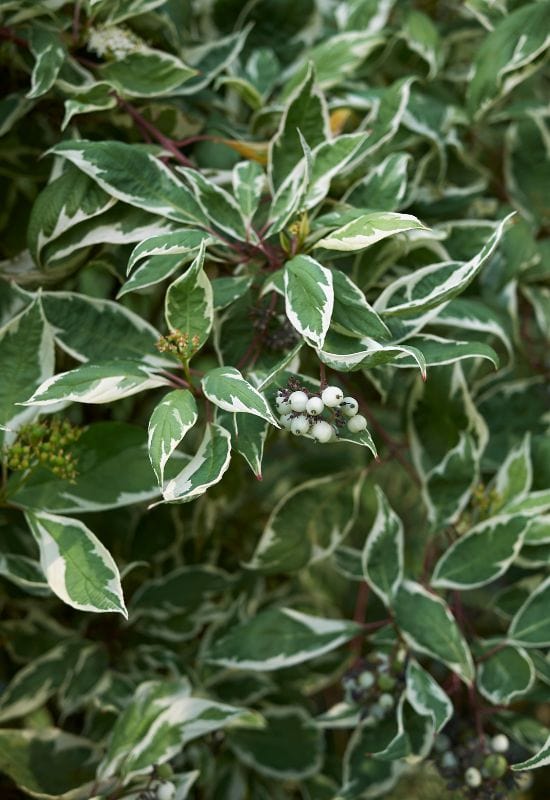
‘Argenteo-Marginata’ Tatarian dogwood is a deciduous shrub, but this is actually a godsend to landscape your garden!
This suckering bush has lovely foliage, with lanceolate (lance shaoed) leaves in a mint green shade with silver under pages, and darker upper sides, but the margins are white, painting a feather inside them…
The overall effect is very breezy, airy and it radiates light and serenity. It is a flowering plant, like all dogwoods, but not one of the showy ones.
Small cream blooms will appear in late spring and they will become magnets for bees, butterflies and other pollinators.
But the show goes on in summer, when white berries ripen on the branches, and birds will definitely feast on them…
But maybe its best time is in winter, when it drops its leaves, and the bark reveals its vibrant and energetic red color, setting your green haven ablaze! Changing personality throughout the whole year, it has caught the attention of the Royal Horticultural Society, which has given it the prestigious Award of Garden Merit.
‘Argenteo-Marginata’ Tatarian dogwood is a very popular variegated shrub for hedges and screens, foundation planting and pond sides, and it gives your landscape structure and interest all year round, heating up the winter months in temperate or continental gardens.
14: ‘Frozen Flame’ Hebe (Hebe speciosa ‘Frozen Flame’)
There are a few varieties of Hebe with variegated foliage, but maybe one of the most striking is the suggestively named ‘Frozen Flame’.
In fact, this small evergreen shrub has an immersive palette of silver green leaves with cream margins, but they blush to a bright rose purple at the tips as soon as temperatures drop.
For this reason, it becomes very valuable to bring vibrant and warm colors to your winter garden, and this is its main landscaping value.
But it is also a flowering plant, and each summer it will blossom with small but lovely lavender colored flowers that open at the tips of the branches. Another variety you may like are ‘Variegata’, with pale violet blossoms and forest green and creamy white foliage, quite glossy.
Small and compact ‘Frozen Frame’ offers you very decorative and colorful foliage, arranged in regular crosses around the thin branches, which you can enjoy in containers, borders or on the sides of paths, especially (but not only), when it gets cold and colors are hard to get.
15: Variegated Mint Bush (Prostanthera ovalifolia ‘Variegata’)
Looking at variegated mint bush you would never guess that it comes from Australia, but it does! A tangle of thin and long, arching branches bears roughly oval leaves, with a grayish sage green center and cream splashes around the margins, making it look quite temperate in personality.
But it is a heat loving shrub, with an extra gift to landscape your garden: the evergreen foliage will also please your nose with its sweet aroma, with minty and eucalyptus notes… That may give away its origin…
You can even use them to make essential oil, if you wish. But it has another asset to offer you…
When spring comes, you will see pending racemes of lovely lilac purple and trumpet shaped flowers opening at the tips, and the gentle contrast could not be more attractive!
Fast growing and delicate looking, variegated mint bush needs a place where you can enjoy its fragrance in your garden, which is one of its main assets: in borders and hedges or containers, near your house, it is ideal for Mediterranean and elegant city designs.
16: ‘Florida Variegata’ Weigela (Weigela ‘Florida Variegata’)
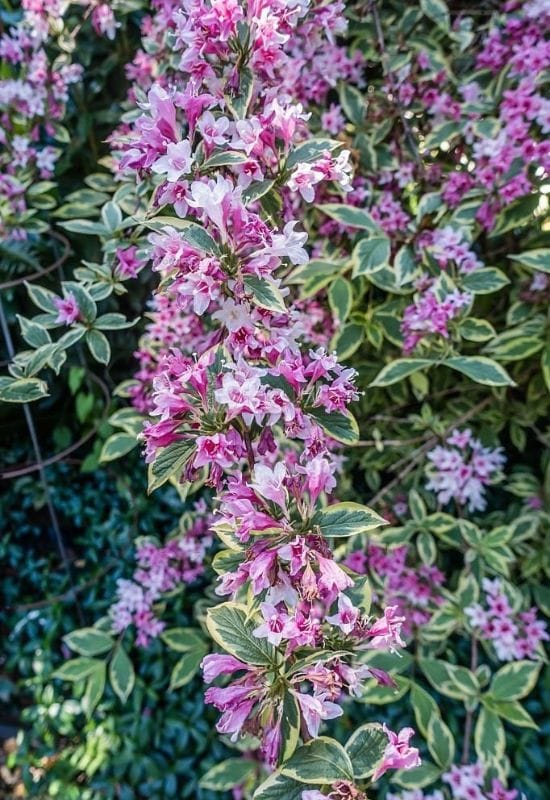
The dense variegated leafy bush that your landscape will gain with ‘Florida Variegata’ weigela is hard to underestimate.
Being deciduous, it will start its performance in spring, when the pointed leaves emerge. And you will soon discover that they have lovely white to cream edges, which draw a green feather in the center.
The exact tonality depends on the light and on the maturity of the foliage, but it ranges from grayish to forest. With plenty of sunlight, in fall it may even blush to rose purple, especially at the tips.
Then again, this is also a famous flowering shrub, because from late spring to early summer it literally fills with clusters of funnel shaped rose to pink blossoms with frilly mouths, a favorite of humming birds!
Winner of the Award of Garden Merit by the Royal Horticultural Society, ‘Florida Variegata’ weigela is perfect for traditionally inspired landscapes, like English country or cottage gardens, in shrubs, borders or for foundation planting. However, its massive blooms make it a worthy specimen shrub as well!
17: ‘Admiration’ Japanese Barberry (Berberis thunbergii var. atropurpurea ‘Admiration’)
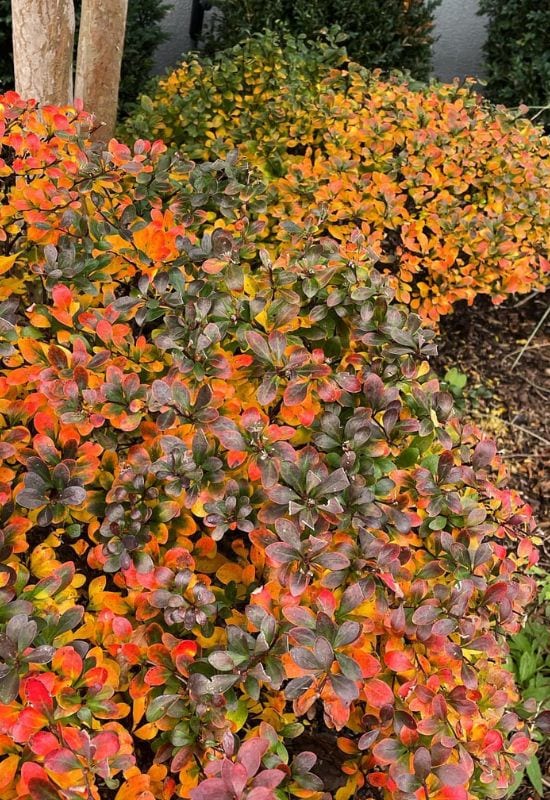
Japanese berberry is a small and compact shrub famous for its brightly colored foliage! So, you can grow the luminous chartreuse ‘Golden Rocket’ the burgundy ‘Crimson Pygmy’ or the ruby ‘Fireball’.
But if you want a variegated variety, winner of the Award of Garden Merit ‘Admiration’ is your best choice!
In fact, the dense and glossy oval leaves that cram on the little branches have a wonderful and refined shade of coral red that’s hard to find, but the margins have a thin line of bright and strong golden yellow!
Sometimes, lime and greenish tonalities creep to the top of the leaf from the under pages, or even some orangish hues, especially in early spring and late fall, when sunlight is weaker.
Lovely but small cup shaped and cream yellowish blooms will nod in spring, and they are followed by crimson and shiny berries, of course!
You can grow ‘Admiration’ Japanese barberry in many places, even in a small garden, in flower beds, rockeries, or in border fronts, or why not, even in containers, and it is perfect for colorful hedging and path sides.
18: ‘Sugar Tip’ Rose of Sharon (Hibiscus syriacus ‘Sugar Tip’)
Why not grow a cold hardy hibiscus variety with variegated leaves?
Then ‘Sugar Tip’ rose of Sharon is your man! …
Well, your shrub, maybe…
In fact, the broad and lobed leaves of this cultivar have white patches around the edges, while the center has green as its theme, from grayish to forest in tonality, depending on sunlight conditions.
This adds a twist and decorative touch to the round shape of bush, which you can also train into a small tree.
But of course, it is also a much loved flowering plant, and spectacular one at that! On the tips of the upright branches, you will see the first buds opening in mid summer, revealing romantic looking double blossoms in a lovely light pastel pink, with a silky texture.
Fully double, the blossoms can have up to 40 petals each, turning each blossom into a little and soft bouquet. And this spectacle will continue into the months of fall!
As a shrub, you can have ‘Sugar Tip’ rose of Sharon in hedges, borders or foundation planting in any traditional and informal looking landscaping design. But if you train it into a small tree, it can work well even in more formal gardens.
19: Variegated Wintercreeper (Euonymus fortunei)
Here is another small and compact shrub that offers you many varieties with colorful variegation; and it’s impossible to pick just one… So, we will offer you a little catwalk! First on show is the vibrant ‘Emerald and Gold’… You will have guessed the shades it offers from its name, but let me tell you that the green part will be in the center of the many small and ovate glossy leaves, while the margins will have an intense and large areas in the yellow range.
And this is a winner of the Award of Garden Merit by the Royal Horticultural Society too! On the other hand, ‘Canadale Gold’ offers you the same contrast, but in paler and more pastel shades, with the edges tending to dark butter. Next, in ‘Gold Splash’ the foliage is larger and, as you may guess, the yellows are predominant, giving you a very luminous effect!
On to a different palette, we find ‘Silver Queen’, with a feather of forest green in the middle and cream white to frame it. But we close our show with another winning champion of the famous RHS prize, the magnificent ‘Emerald Gaiety’ with large snow white areas enclosing an very dark emerald (of course) tonality in the middle!
This is a larger climbing bush than others, so you get a lot for very little work! All are evergreen, so you will enjoy them in winter as well, and all blossom in summer, with clusters of tiny but decorative white to greenish flowers!
Choose any of these wintercreeper varieties to add an all year round and colorful touch to your border fronts, to drape wall sides, for hedging or even as ground cover or to climb up trellises and gates! And it is one of the best shrubs for shady gardens too!
20: ‘Twist of Pink’ Oleander (Nerium oleander ‘Twist of Pink’)
And we come to the final protagonist of this article, chosen from the many oleander varieties that grace this planet! ‘Twist Pink’ is a bit special, because while all the other members of this genus have foliage that ranges from bright to olive green, of course, our pick is variegated.
In fact, its long and glossy, even waxy looking foliage, rich in oils (hence the name) has a central green patch that runs along the whole leaf. This can be emerald to grayish, even bluish at times. But look at the margins and you will see irregular white or sometimes cream colored parts, sometimes bigger, and sometimes smaller.
As you know, this fast growing shrub is evergreen, so the variegated foliage will keep you company all year round.
And if you are lucky enough, so will its amazing blooms! We have all seen them flowering even in the midst of winter, and in this case, the clusters of blossoms that come at the tips of the branches are of a very vibrant and luminous rose pink shade!
‘Twist of Pink’ will require warm climates, like all other oleanders. But if you can afford this, its is invaluable for your landscaping.
Excellent in coastal garden, great for xeriscaping and an absolute must have in Mediterranean designs, it can be a foundation plant, the back of a border or part of a screen or hedge, great in containers and even willing to naturalize! I was forgetting… You can also train it into a very decorative tree!
Variegated Shrubs for Colorful Landscaped Gardens!
What a colorful journey! Yes, flowers are very beautiful and they decorate gardens with their bright shades, but now that you have seen these amazing variegated shrubs, you can add even more tonalities to the palette of your garden, and make your landscaping efforts a real work of art!

Written By
Amber Noyes
Amber Noyes was born and raised in a suburban California town, San Mateo. She holds a master’s degree in horticulture from the University of California as well as a BS in Biology from the University of San Francisco. With experience working on an organic farm, water conservation research, farmers’ markets, and plant nursery, she understands what makes plants thrive and how we can better understand the connection between microclimate and plant health. When she’s not on the land, Amber loves informing people of new ideas/things related to gardening, especially organic gardening, houseplants, and growing plants in a small space.

